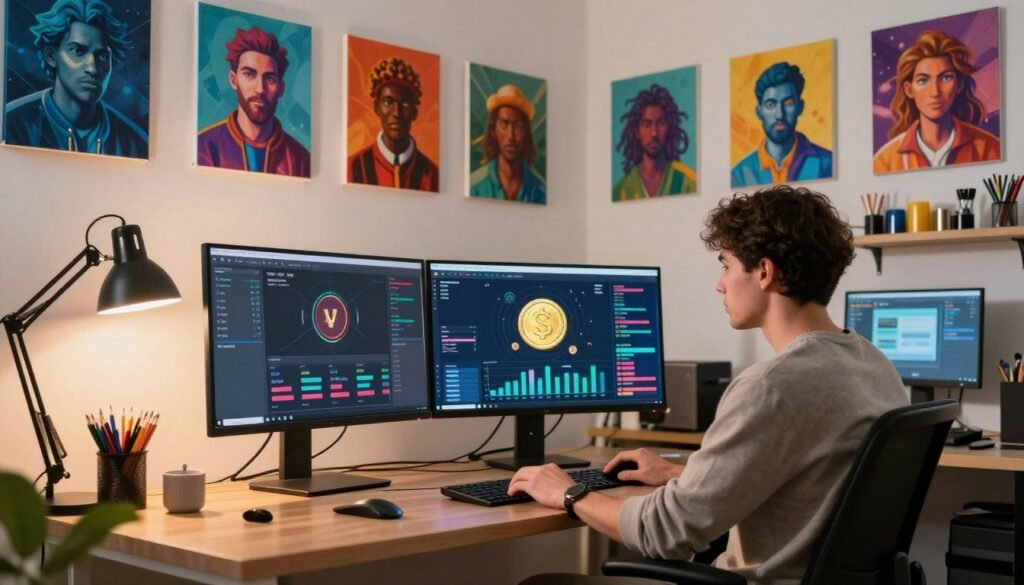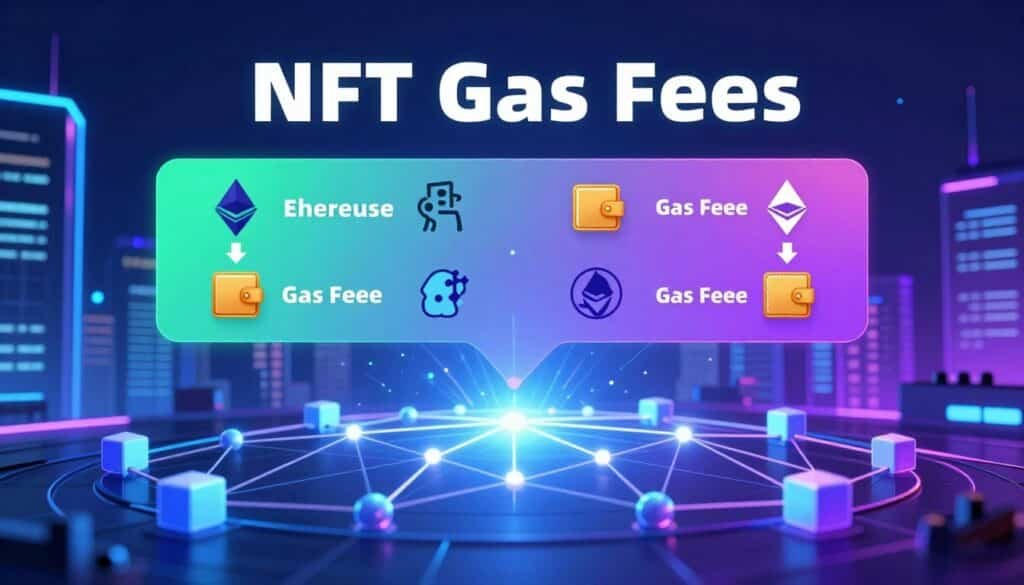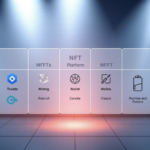Now Reading: NFT Creation Tutorial: A Beginner’s Guide to Success
- 01
NFT Creation Tutorial: A Beginner’s Guide to Success
NFT Creation Tutorial: A Beginner’s Guide to Success
Digital collectibles have revolutionized how we own and trade unique assets online. This step-by-step guide walks you through transforming your ideas into blockchain-verified items, whether you’re an artist, developer, or crypto enthusiast. You’ll get started with essential tools like Solidity for smart contracts and platforms like Ethereum for secure transactions.

Building your first digital asset requires about 4-5 hours, including coding and deployment. We’ll use practical tools like Metamask for wallet management and Hardhat for testing environments. These resources help ensure your project meets professional standards while maintaining security.
The process involves more than just technical skills. You’ll learn how to price your work effectively and protect intellectual property. From simple art pieces to complex 3D models, this tutorial covers various formats that thrive in digital marketplaces.
Key Takeaways
- Essential tools include Solidity, Metamask, and IPFS storage platforms
- First-time creators should allocate 4-5 hours for completion
- Blockchain verification ensures asset uniqueness and ownership
- Multiple formats supported, from images to interactive media
- Proper pricing strategies maximize marketplace success
- Original content protects against legal issues
Understanding NFTs and Blockchain Fundamentals
Unique digital assets are changing how we perceive ownership online through cryptographic verification. These tokens operate on decentralized networks, creating provable scarcity for items like artwork or virtual collectibles. Unlike traditional files that can be copied endlessly, each unit carries distinct properties verified by blockchain technology.

What Are NFTs and How Do They Work?
Non-Fungible Tokens (NFTs) use smart contracts to establish ownership rights. Each token contains a digital fingerprint stored on a distributed ledger, making it impossible to replicate. When you purchase one, the blockchain updates ownership records automatically through secure transactions.
Here’s why this matters:
- Every token has metadata confirming its origin and uniqueness
- Smart contracts handle royalty payments for creators automatically
- Ownership history remains publicly accessible for verification
Blockchain Essentials for NFT Ownership
Blockchain networks act as tamper-proof recordkeepers. They store transaction details across thousands of computers, ensuring no single entity controls the data. This system prevents fraud while allowing transparent tracking of asset transfers.
Key features include:
- Decentralized validation of every transaction
- Immutable records that can’t be altered retroactively
- Cryptographic security protecting against unauthorized changes
Setting Up Your Crypto Wallet and Development Environment
Your journey begins with two critical components: a secure digital vault and robust development tools. These elements form the foundation for managing transactions and building blockchain-based projects effectively.

Choosing the Right Crypto Wallet
Selecting a reliable wallet ensures safe storage and smooth transactions. MetaMask leads the pack with its browser extension and marketplace compatibility. Mobile users often prefer Rainbow for its intuitive app design, while Coinbase offers beginner-friendly security features like two-factor authentication.
Consider these factors when setting up your account:
- Backup your recovery phrase offline
- Verify wallet-to-platform integrations
- Check supported blockchain networks
Essential Tools: Metamask, Hardhat, and More
After securing your crypto wallet, configure these development essentials:
- MetaMask for gas fee payments and network switching
- Hardhat’s testing environment for smart contract debugging
- Pinata for decentralized file storage solutions
Your wallet address acts like a bank account number on the blockchain. You’ll need this unique string to receive payments or transfer assets. Always make sure tools are updated to avoid compatibility issues during deployment.
Proper configuration reduces errors in later stages. Pair Hardhat with Alchemy nodes for reliable Ethereum connections. This step creates a seamless workflow from coding to final launch on your chosen platform.
NFT Creation Tutorial: Step-by-Step Guide for Beginners
Transforming concepts into blockchain-ready assets requires precise technical execution. This guide focuses on practical implementation using industry-standard tools and libraries.

Minting Your First NFT Using Smart Contracts
Start by building your smart contract with OpenZeppelin templates. These pre-audited frameworks handle core functions like ownership tracking and transfer approvals. For dynamic traits, integrate Chainlink’s VRF to generate verifiable randomness during the minting process.
Key steps include:
- Defining token metadata structures in Solidity
- Configuring VRF parameters for trait randomization
- Setting up callback functions for asynchronous operations
Understanding Solidity and Contract Deployment
The EmojiNFT example demonstrates essential components:
- Inheritance from ERC-721 standards
- On-chain SVG generation using RGB values
- Two-phase minting with request/fulfill patterns
Test your code on Sepolia testnet before mainnet deployment. This step helps identify gas inefficiencies and logic errors. Successful projects often combine technical execution with strategic planning, like those offering exclusive membership benefits.
Always verify contract addresses after deployment. Proper configuration ensures your token behaves as intended across marketplaces and wallets.
On-Chain Metadata and NFT Artwork Generation
The backbone of digital collectibles lies in their metadata – the blueprint that defines appearance and traits. This critical layer determines how platforms display your work, from basic details like name and description to complex visual attributes.
Generating SVG Art for Your NFTs
Scalable Vector Graphics (SVG) shine for blockchain integration. Unlike traditional image files, these XML-based designs generate programmatically using smart contract logic. Developers often use functions like createOnChainSvg to mix random RGB values, creating unique color palettes directly on-chain.
Three key advantages of SVG generation:
- No external hosting required
- Dynamic updates through code modifications
- Infinite scalability without quality loss
Storing Metadata On-Chain vs Off-Chain
Your storage choice impacts longevity and costs. On-chain methods embed data permanently in contracts, while off-chain solutions like IPFS offer flexibility. The createTokenUri function demonstrates this by packaging base64-encoded artwork with JSON attributes.
Consider these factors when deciding:
- Gas fees for complex data storage
- Permanent accessibility requirements
- Future-proofing against link rot
Hybrid approaches often work best. Store core traits on-chain for guaranteed persistence, while keeping large media files on decentralized networks. This balances cost efficiency with collection durability.
Navigating NFT Marketplaces and Selling Your Digital Assets
Choosing where to list your digital collectibles determines visibility and profitability in competitive spaces. Each platform caters to specific audiences and offers unique tools for managing transactions. Strategic selection balances costs, exposure, and long-term revenue potential.
Selecting the Ideal NFT Marketplace
Market leaders like OpenSea dominate with multi-chain support and gasless minting options. Their 2.5% commission appeals to creators launching large collections. Curated platforms like SuperRare charge 15% but attract serious art investors willing to pay premium prices.
Consider these factors when comparing platforms:
- Blockchain compatibility affects your target audience
- Minting costs (upfront vs. buyer-paid fees)
- Secondary sale royalty structures (5-50%)
Key Considerations: Gas Fees, Royalties, and Security
Gas fees vary dramatically across networks. Ethereum’s Proof-of-Stake system maintains security but carries higher costs. Solana and Flow offer cheaper transactions through hybrid consensus models.
Three critical financial elements:
- Lazy minting defers costs until sale completion
- Royalty mechanisms ensure ongoing earnings
- Platform commissions impact final profit margins
Always verify marketplace security protocols. Look for completed smart contract audits and two-factor authentication options. These measures protect both creators and buyers during transactions.
Bringing It All Together for NFT Project Success
Combining technical execution with strategic planning transforms digital collectibles into valuable blockchain-based projects. Start by selecting formats that showcase your vision – whether 2D animations, 3D models, or interactive media. Pair these with a blockchain network matching your goals: Ethereum for established ecosystems, Solana for low-cost transactions, or Flow for gaming integrations.
Your wallet setup and smart contract deployment form the operational backbone. Test networks like Sepolia help refine gas fee management before mainnet launches. Tools like Hardhat streamline debugging, while platforms such as Pinata ensure decentralized file storage reliability.
Three pillars of sustainable projects:
- Clear utility beyond speculative value
- Community-focused roadmap execution
- Compliance with evolving crypto regulations
When listing collections, balance marketplace fees against audience reach. OpenSea’s broad exposure differs from curated platforms favoring niche buyers. Successful teams often analyze target demographics before finalizing distribution channels.
Monitor transaction patterns post-launch to optimize pricing and royalties. Regular metadata audits prevent display issues across wallets and explorers. With these elements aligned, your blockchain venture stands ready to make waves in the evolving digital ownership space.
FAQ
How do blockchain networks verify ownership of digital assets?
Blockchain networks use decentralized ledgers to track ownership through unique token IDs and smart contracts. Transactions are recorded permanently, allowing public verification without third-party intermediaries.
Which crypto wallets work best for managing digital collectibles?
Popular options include MetaMask for Ethereum-based projects and Phantom for Solana. These wallets support secure storage, seamless marketplace connections, and direct interaction with decentralized apps.
What tools are essential for deploying smart contracts?
Developers often use Hardhat or Truffle for testing and compiling code. Platforms like Remix IDE provide browser-based environments for writing Solidity, while Etherscan helps verify deployed contracts.
Why choose on-chain metadata over cloud storage solutions?
Storing metadata directly on networks like Ethereum ensures permanent accessibility and tamper-proof traits. Off-chain options like IPFS reduce gas fees but require ongoing file hosting commitments.
How do gas fees impact marketplace selection?
Ethereum-based platforms like OpenSea often have higher transaction costs during network congestion. Alternatives like Rarible (Flow blockchain) or Magic Eden (Solana) offer lower fees for specific use cases.
What royalty structures do major platforms support?
A> Marketplaces including Foundation and SuperRare allow creators to set 5-10% resale royalties. Always review platform policies, as enforcement methods vary across chains like Polygon or Avalanche.
Can SVG files improve artwork interoperability?
Yes. Scalable Vector Graphics render crisply at any size and embed directly into smart contracts. This avoids resolution issues common with JPEG/PNG formats in generative art projects.













